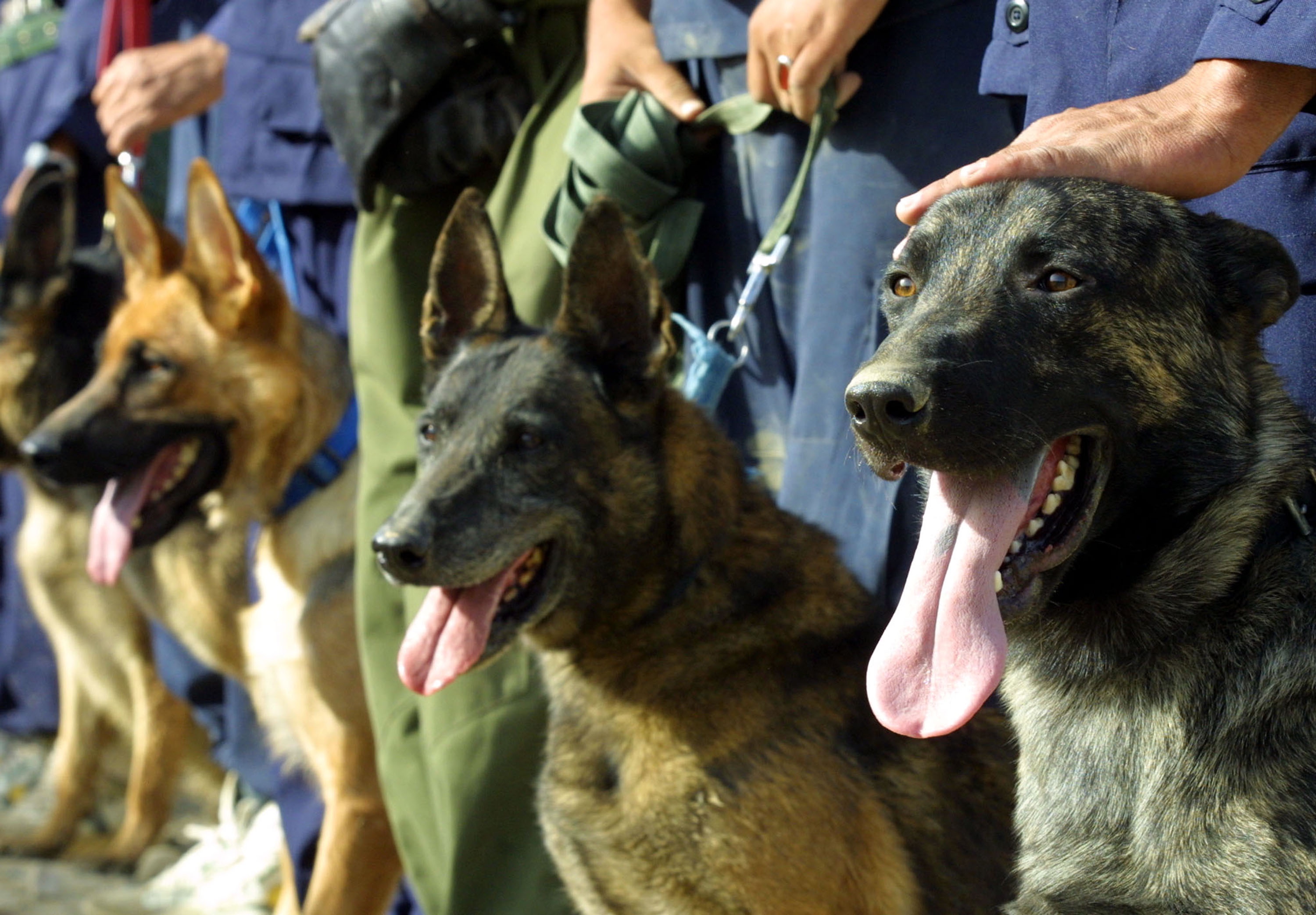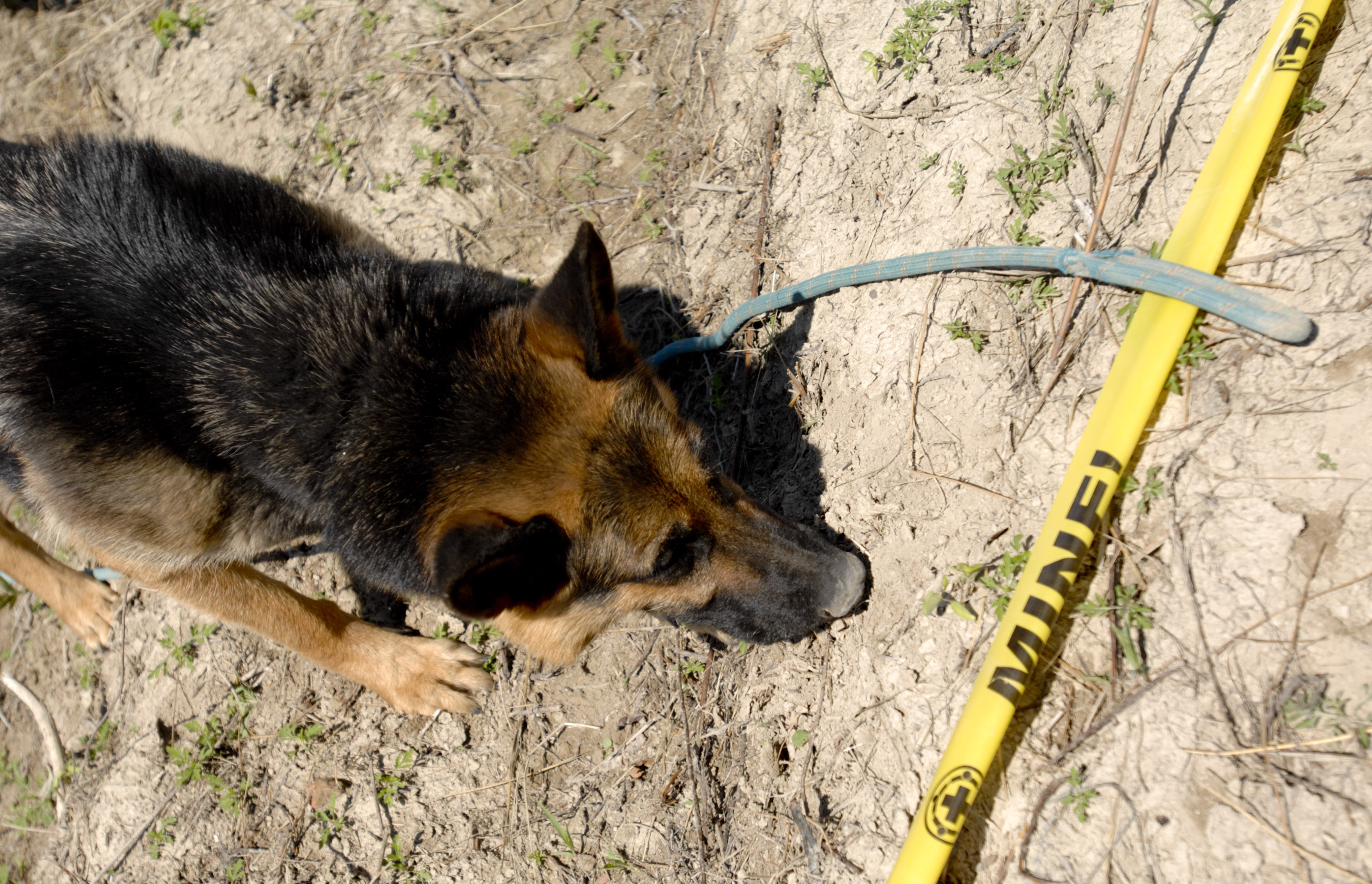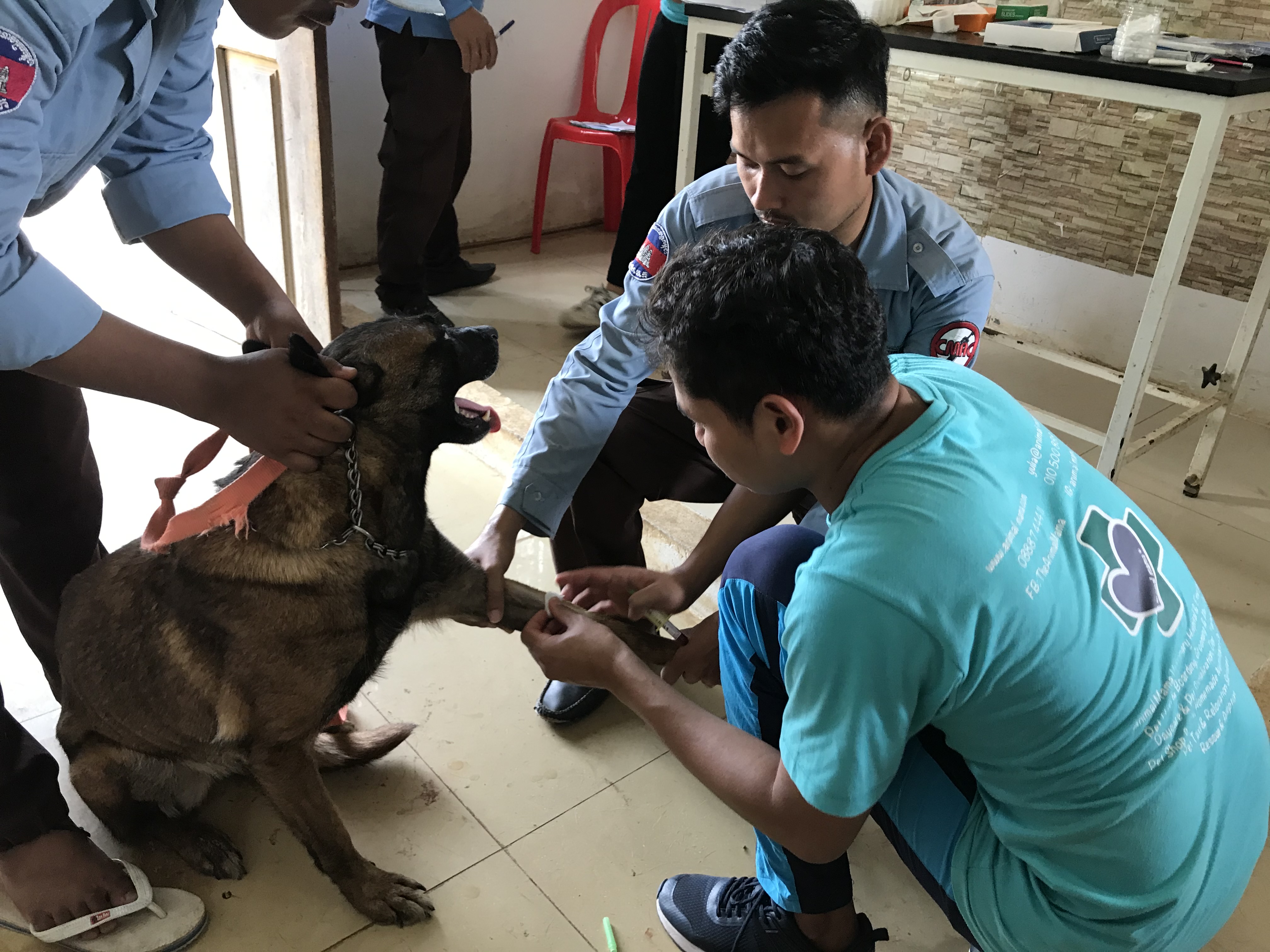
Health & Medicine
Retraining the underdogs

Tropical diseases affecting mine detection dogs have disrupted efforts to clear landmines in Cambodia, but a new technique could help keep the dogs healthy and working
Published 4 September 2019
Cambodia has the second-biggest landmine contamination problem in the modern world, with four to six million mines laid during internal conflicts.
At its worst point in the early 1990s, it was estimated there was one mine or piece of unexploded ordinance per person in the war-torn Southeast Asian nation.

As a result, Cambodia has a high proportion of physically disabled people in its population, which has a huge impact both socioeconomically and psychologically. And these are some of the key factors contributing to the country’s poverty.
But since the early 1990s, humanitarian efforts have cleared roughly one million mines, and landmine related injuries and deaths have fallen.
Much of this is thanks to man’s best friend.

Health & Medicine
Retraining the underdogs
Landmine-detection dogs are deployed by the Cambodian Mine Action Center (CMAC) with technical and financial assistance from Norwegian People’s Aid (NPA) and other organisations after the initial support of the Swedish Armed Forces ended in 2003.
The work of the dogs has sped up the clearing process over the last 19 years – working quickly and accurately.
In fact, no dog has ever set-off a landmine.
But the mines aren’t the problem for these dogs. Because of the tropical environment they’re working in, many of the highly trained animals are affected by infections that are transmitted by parasites including ticks, fleas and mosquitoes, which can lead to early death or retirement.
As well as the heartbreak, this comes at a huge cost to NGOs and landmine clearing efforts, as a huge amount of resources are invested to train and deploy these valuable dogs.

Sadly, it’s common that dogs in Southeast Asia are afflicted with a number of vector-borne diseases (VBDs) like tropical canine pancytopenia (ehrlichiosis), babesiosis and ‘surra’ (trypanosomiasis).
There’s a whole range of health risks in the tropics that just aren’t found in temperate climates.

Sciences & Technology
Plant diseases no match for man’s best friend
Lucas Huggins’ PhD project is currently exploring the diversity of parasites that infect dogs across Cambodia using the latest molecular techniques, like next-generation sequencing (NGS); both in the stray dog population and in the mine detection dogs.
The project has developed, tested and validated new methods for assessing all bacterial, apicomplexan and kinetoplastid parasites from the blood of dogs.
What sets these methods apart from ones typically used for assessing vector-borne parasitic and bacterial diseases in dogs is that it uses an NGS-approach, published in the journals Scientific Reports and Parasites and Vectors, respectively.
Our method applies a new molecular testing technique called metabarcoding to detect a range of pathogens, all at once, rapidly.

In traditional molecular methods like polymerase chain reaction (PCR) testing (which makes many copies of a specific DNA segment), each potential pathogen must be tested one-by-one, with very limited ability to detect pathogens that are rare or new to science.
Metabarcoding allows us to identify entire groups of species from an DNA sample.
It compares the DNA in a blood sample to a database of known genetic sequences of disease-causing organisms, not entirely dissimilar to a cashier scanning groceries with a barcode scanner that’s tuned to the store’s catalogue.

Environment
On the DNA trail of the platypus
We can use this to determine which species are present and treat animals accordingly.
Through comparative experiments we have found that our new technique is more sensitive than traditional molecular methods for detection of certain pathogen species and groups.
Now, we’re intending to use our technique on samples of semi-domesticated community dog populations in Cambodia that we collected recently during our fieldwork.
Our team, with support from our official partners, CMAC and Animal Mama Veterinary Hospital in Phnom Penh, collected samples from dogs across Cambodia.
Further fieldwork in September and November will increase the number of sampling locations with the aim of achieving a total of 770 sampled dogs from across the country.

Dogs are social animals. And mine detection dogs in Cambodia are exposed to parasites in environments shared with local community dogs through their work.
These local dogs may act as a reservoir of transmissible disease. Identifying canine VBDs in Cambodia will be a valuable first step to understanding the scale of the problem and will allow us, along with our partners, to come up with a plan of action to prevent VBDs in mine detection dogs.

Sciences & Technology
What are we doing to our dogs?
Our metabarcoding methodology could give us a deep insight into the VBDs that afflict canines across Cambodia, while also potentially reporting rare or previously uncharacterised pathogens.
After assessing what diseases dogs are being infected by, we will also test traditional and contemporary anti-parasite defences like collars and spot-on treatments to see if the latest medications, which are primarily designed for dogs in temperate climates, can prevent VBDs within pet and mine detection dogs.
At the same time, we’re aiming to shed light on the prevalence of canine illnesses across the country by highlighting regions of most concern.
This is particularly important work given that some of these diseases can be zoonotic, meaning they can be transmitted to humans as well.
Knowing the prevalent canine illnesses in Cambodia will allow our partners, like Bayer Animal Health, to recommend anti-parasite products. At the same time, this understanding could also help with the development of new and effective products for dogs living in the tropics.

Throughout our history, dogs have been both our companions and our co-workers. Even with new developments in automation, remote sensing and more – they can be the quickest and most effective way to detect danger like landmines.
But when it comes to sniffing out parasites that cause disease, this research has shown our metabarcoding techniques may be the keenest nose we have.
This project is supported by an Australian Research Council Linkage Grant, with Bayer Animal Health, NPA, CMAC and Animal Mama Veterinary Hospital as official partners.
Banner: Getty Images